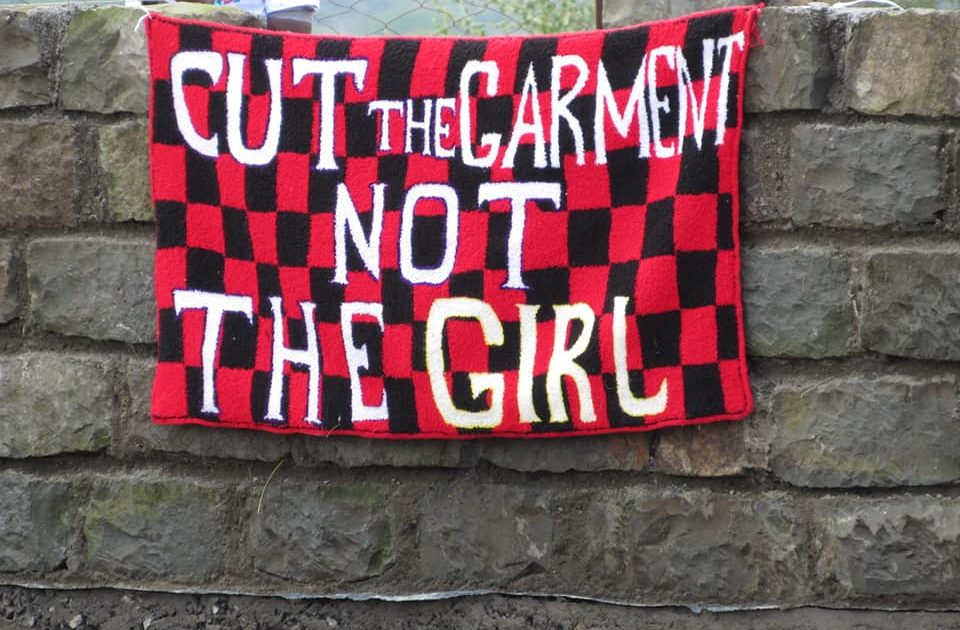It was in December 2013, when Naneu Timpani* overheard her parents planning her circumcision ceremony.
By then, she was only 12 years old but understood the consequences of Female Genital Mutilation (FGM).
“Through older friends in school who had gone through the rite, I knew that not only was it painful but had dire consequences on my well-being,” said Naneu. She therefore planned to escape the moment her parents left the homestead.
“I knew of a rescue centre where one girl from our school escaped so as to avoid being cut so I decided to go there,” added Naneu.
She walked 20 Kms from her home to the Prince of Peace center in Kajiado East and they took her in after listening to her story.
However, this did not go down well with her parents who viewed her escape as a sign of disrespect. Naneu says her parents completely disowned her after she fled from home.
“They have never come to visit me. My sisters came once and they told me that our parents are still disappointed in me. They viewed my escape as disrespect to them and a big embarrassment as they had already sent invites for the ceremony,” she narrates.
“I was able to continue with schooling in the centre and am sure one day I will make them proud when I am successful and they will come looking for me,” says Naneu
Naneu sat for her KCSE Examinations in 2019 and scored a B- but was unable to continue to University due to lack of funds.
“I was to undertake a Bachelor of Science in Dairy Technology and Management in Egerton University but lacked school fees as most of the sponsors to the center had backed out as the Covid-19 pandemic had also hit them hard financially,” Naneu recalls.
Though she misses home sometimes, Naneu doesn’t regret the decision to escape, and urges other girls to follow suit if they ever find themselves in the same situation.
“I urge all girls and parents to refrain from the practice, because it does not add any value to a girl’s life,” she added.
Jane Naponu* was however not as lucky like Naneu. The nine-year-old girl says plans about her circumcision were kept secret from her.
“I never knew about the plans of my circumcision beforehand. I was just woken up by my mum at 4.00am and told to take an ice-cold bath as the day I would become a woman had arrived,” Naponu narrates sadly.
She tried to protest but her mum would hear none of it as the old woman hired for the job had already arrived.
“I reluctantly took the bath, sat on the floor naked and patted my legs wide as the circumciser ordered,” she said.
Naponu added that it was a chilling experience; very painful, uncomfortable and demeaning. It took three weeks for her to heal but another surprise awaited her.
Barely a month after undergoing the ‘cut’, she found out that plans to marry her off to a man almost the same age as her father had already been made.
“I was still recovering and had been sleeping inside our hut. I came out of the house for fresh air and found my father with another elderly man unknown to me. Dad asked me to greet him as he was my husband and had come to negotiate my dowry,” she said.
Naponu was perturbed but this time she had a plan.
“I was disturbed but I had to act fast before I could be married off without my consent. After dad had left with the man, I quickly went to my learned uncle’s house and informed him what had transpired,” she noted.
The uncle organized for her escape without the knowledge of her parents.
She revealed that her uncle advised her to return home and go back to his house the next day as he made arrangements for her to escape to a rescue centre.
The uncle took her to Tasaru Rescue Center where she stayed for one year before transferring to the Prince of Peace Center after Tasaru was closed down due to lack of funds.
“I am very happy to be here. I started school at 11 years since my dad never took my siblings and I to school. Though older than my classmates, I am glad I had a chance to attend school other than being married off at such a tender age,” she says.
She has never contacted her parents ever since but she wishes her siblings could also have a chance to attend school.
According to Joyce Lentoiye, the Director of Prince of Peace Centre, FGM is still rampant among the Maasai community despite the rite being outlawed in Kenya.
Lentoiye said efforts by the government, human rights activists and other stakeholders to eradicate the vice completely has been an uphill task as it is deeply rooted in culture.
“Stigmatization, lack of information and fearing for the worst after leaving home has led to many girls undergoing the cut which should not be the case. We should embrace the positive aspects of our African culture and do away with those that are retrogressive,” said Lentoye.
In partnership with FIDA, Prince of Peace Rescue Center organizes Community-led Alternative Rite of Passage (CLARP) for the girls.
“There are alternative rites of passage that can be used to initiate girls into womanhood without them necessarily facing the cut.We usually conduct three days training annually on sexual and reproductive health rights, positive norms & values, self-esteem and life skills,” the Director said.
The girls are then able to graduate through CLARP and are blessed by Cultural elders and the church leadership.
The Prince of Peace Center became operational in 2010 under the leadership of Bishop Jackson Solonka who saw the need to give girls from poor backgrounds and those facing tough conditions at home a chance to live a better life.
To date, they have rescued a total of 26 girls. The centre manages their education and well-being through donors and other well-wishers.
According to an evaluation report done by Amref in 2020, FGM prevalence declined by 24.2 per cent in Kajiado County since the implementation of CLARP compared to control counties of Mandera, Wajir and Marsabit.
By Diana Meneto





